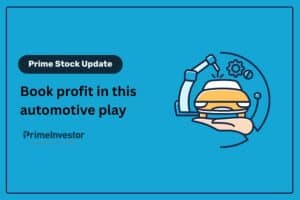Prime Portfolios are a set of eighteen unique portfolios that meet several investor timeframes and needs. Prime Portfolios are listed under Ready-to-use-portfolios in the Recommendations dropdown. These portfolios primarily use mutual funds, but where there are better-suited products such as deposits or government schemes, the portfolios include those as well. We review these portfolios every quarter and make changes, where necessary, to remove underperformers or to include any new investment opportunity or product that may come by.

If you are new to PrimeInvestor, do go through the boxed section below on how we construct Prime Portfolios and how you can use it.
Construction of Prime Portfolios
We have classified Prime Portfolios based on popular financial needs/goals you may have. The basis for many of these would be the goal’s timeframe. We have therefore segregated many of these goals further into timeframe buckets. For those looking for passive investing options, check our home page of Prime Portfolios.
Fund or instrument selection: Prime Portfolios draw from Prime Funds and mix funds with different strategies to minimize duplication within a portfolio. However, there may be a few cases where funds are outside of Prime Funds. This apart, we use other products, primarily on the fixed income side, in portfolios where they will be good options.
Asset allocation: The asset allocation in Prime Portfolios is done based on the ‘ideal’ allocation for a given timeframe or goal. But this is not cast in stone. Assess your own capacity to take risk before choosing a portfolio. These portfolios are not ‘advisory’ in nature. They are bundled MF products with a mix of equity and debt funds and fixed income options with varying strategies for diversification.
Using Prime Portfolios
Prime Portfolios are useful in the following cases:
- If you are new to mutual fund investing, or do not know how to mix funds and want a readymade basket of funds to invest.
- If you are an existing investor but have new goals and want an asset-allocated portfolio for that purpose.
- If you wish to build your own portfolio by taking cues from the asset allocation and category allocation that we use.
- If you wish to add or modify your existing portfolios by taking cues from Prime Portfolios’ construction use Prime Funds or Portfolio Review Tool. If you want help to build your own portfolio, then use our Build your own Portfolio tool to have an asset allocated portfolio with the right category mix.
If you are investing in or referring to any Prime Portfolio, note the following:
- We review these portfolios every quarter after the review of our ratings, recommendations, and Prime Funds. So, this will typically be 2-3 weeks after the end of a quarter.
- Changes may involve fund changes or individual fund allocation changes.
- In the review, where we make changes to Prime Portfolios, we will explicitly specify whether a fund needs to be exited or only SIPs stopped, and investments made so far held.
- In our review reports, we mention only those portfolios where there are actual changes or portfolios to which we wish to draw your attention on any performance. If a Prime Portfolio is not mentioned in these reports, you can take it that there are no changes.
- To track changes to a portfolio, click the ‘Follow’ button to ensure you receive alerts about the changes. Your Dashboard will also show you portfolios that have been changed when you Follow a portfolio.
- We send email and Dashboard alerts on changes only for those who ‘Follow’ a portfolio. However, we also publish a report on the blog on the same every quarter, with the detailed reasoning for changes along with action to be taken. Either way, keep note of our emails – a week or two after a quarter ends!
Some asset classes in your portfolio may have strayed from the original asset allocation as market rallies. You need to run a check on this once a year to see whether you need to rebalance, as each of you would have invested in different times. Read our explanation on rebalancing here and use our calculator to know how much to invest/redeem in rebalancing.
It is important for you to read and record our emails for all the above. So kindly make sure you find some time to do this to keep your portfolio in good shape!
Change in Prime Portfolios this quarter
In this quarter, we have made fund and allocation changes to a few of our portfolios. We also have an action update on another portfolio, to streamline the portfolio and reduce the number of funds.
Timeframe 3-5 year portfolio
In this portfolio, we are removing Mirae Asset Large Cap and replacing it with Nippon India Large Cap in order to improve return potential. Mirae Asset Large Cap has long been a stable performer, but has been faltering for a while now. While the fund has shown brief periods where it beats the Nifty 100 TRI, the fund has more often lagged the index. Its short-term underperformance has continued enough to impact its longer-term returns as well. The fund is now about 1-2 percentage points behind the Nifty 100 TRI in 3-year periods, and this margin has been slowly swelling over the past few months.
Given that higher returns for this portfolio comes from the equity component and the more limited timeframe, we would prefer to trim Mirae as underperformance can take several quarters to recover. On the other hand, Nippon India Largecap, with a value tint, has been steadily gaining ground and has showcased consistency. We are therefore adding this fund.
Action required:
- Stop SIPs, if any, in Mirae Asset Large Cap. Continue to hold all investments made.
- Start fresh SIPs if required in Nippon India Large Cap. Any fresh lumpsum investments can also be made in this fund.
- Do not exit Mirae Asset Large Cap; simply avoid making further fresh investments, through SIP or lumpsum, in this fund.
Timeframe 5-7 year portfolio
In this portfolio, we are making no changes. However, this portfolio has earlier had Kotak Flexicap, which we removed in our March 2022 review. We had asked you to hold all investments made until then but stop all SIPs.
This fund has recovered from the steep underperformance it had had then. However, apart from intermittent periods, the fund has not been able to sustain above the Nifty 500 TRI. This apart, Kotak Flexicap serves to add to the number of funds held for those who had started investing in this portfolio early on. This can limit the performance of other funds in the portfolio.
Therefore, we recommend you exit all investments made in Kotak Flexicapas part of this portfolio (please note that we still have a Hold call on the fund outside of this portfolio). You can reinvest this amount in Invesco India Contra (existing fund in the portfolio), which also follows a value-based approach and holds a large-cap oriented portfolio. You can make such exits in a phased manner if you wish to minimize tax impact.
Timeframe 5-7 year portfolio
In this portfolio, we are making the following changes:
One, we are replacing Mirae Asset Large Cap with Nippon India Large Cap Fund. Despite a great record in the past, the Mirae Asset has been struggling to steadily beat the index for several quarters now. This underperformance has been impacting its longer-term returns as well. The fund is now about 1-2 percentage points behind the Nifty 100 TRI in 3-year periods, and this margin has been slowly swelling over the past few months. To avoid further opportunity loss, fresh exposure can be avoided in the fund. On the other hand, Nippon India Largecap, with a value tint, has been steadily gaining ground and has showcased consistency. We are therefore adding this fund.
Two, we are reducing the weight of Kotak Emerging Equity to 10% from 25%. This weight is being redistributed with other funds and with a new fund, as explained below. Kotak Emerging Equity has earlier been a quality, consistent outperformer beating peers and the Nifty Midcap 150 TRI. However, the fund has been lagging both category and benchmark for a while now, and the underperformance is not small. This is partly to do with the nature of stocks driving the Nifty Midcap 150 where stocks with poorer fundamentals have seen sharp climbs. Given the fund’s portfolio quality, we are giving the fund some leeway for its current performance. But a sharp correction would be necessary for the fund to catch up with the index. For this reason, we cannot risk high weight to this fund. On the positive side, the fund has been able to contain downsides well. It has also shown signs of overall improvement; going by 1-month and 3-month rolling returns.
Three, we are increasing the weight to Motilal Oswal Nifty 500 Index fund to 15% from 10% earlier. Four, we are adding a new fund Franklin India Technology at a 10% weight.
To make up for the lost performance, we are upping exposure to Nifty 500 and bringing a more aggressive thematic fund. While tech as a theme has underperformed in the large-cap space, the mid and small companies in niche IT segments have done well. We expect Franklin’s exposure to such stocks together with a global fund exposure to help play returns-catch up in this portfolio. You can consider SIPs in this sector fund but make sure you rebalance the portfolio when allocations move beyond the original proportion (10%) by more than 3-5 percentage points.
Action required:
- Stop SIPs, if any, in Mirae Asset Largecap and start fresh SIPs in the Nippon Largecap fund. You can continue to hold investments made in the Mirae Fund and periodically review the fund using either our Portfolio Review Pro tool or our MF Review tool. We will of course alert you if the fund warrants an exit (if you use the ‘follow’ feature).
- Reduce future allocation (SIP or lumpsum, whichever way you invest in) to Kotak Emerging Equity to 10% and increase Motilal Oswal Nifty 500 index fund to 15% and start fresh SIPs in Franklin India Technology (10%). You can continue to hold existing investments in Kotak Emerging Equity with reduced SIP allocation; please note that you don’t need to redeem from Kotak Emerging Equity to bring it down to 10% of your portfolio. Just ensure fresh investments are in the new proportion.
All other funds in this portfolio can be retained as before. The new portfolio can be seen here: Greater than 7-year portfolio
NRI investing – Active MF Portfolio
The above portfolio’s equity component is the same as the greater than 7-year portfolio. We are repeating it here for the benefit of those who follow this portfolio.
One, we are replacing Mirae Asset Large Cap with Nippon India Large Cap Fund. Despite a great record in the past, the Mirae Asset has been struggling to steadily beat the index for several quarters now. This underperformance has been impacting its longer-term returns as well. The fund is now about 1-2 percentage points behind the Nifty 100 TRI in 3-year periods, and this margin has been slowly swelling over the past few months. To avoid further opportunity loss, fresh exposure can be avoided in the fund. On the other hand, Nippon India Largecap, with a value tint, has been steadily gaining ground and has showcased consistency. We are therefore adding this fund.
Two, we are reducing the weight of Kotak Emerging Equity to 10% from 25%. This weight is being redistributed with other funds and with a new fund, as explained below. Kotak Emerging Equity has earlier been a quality, consistent outperformer beating peers and the Nifty Midcap 150 TRI. However, the fund has been lagging both category and benchmark for a while now, and the underperformance is not small. This is partly to do with the nature of stocks driving the Nifty Midcap 150 where stocks with poorer fundamentals have seen sharp climbs. Given the fund’s portfolio quality, we are giving the fund some leeway for its current performance. But a sharp correction would be necessary for the fund to catch up with the index. For this reason, we cannot risk high weight to this fund. On the positive side, the fund has been able to contain downsides well. It has also shown signs of overall improvement; going by 1-month and 3-month rolling returns.
Three, we are increasing the weight to Motilal Oswal Nifty 500 Index fund to 15% from 10% earlier. Four, we are adding a new fund Franklin India Technology at a 10% weight.
To make up for the lost performance, we are upping exposure to Nifty 500 and bringing a more aggressive thematic fund. While tech as a theme has underperformed in the large-cap space, the mid and small companies in niche IT segments have done well. We expect Franklin’s exposure to such stocks together with a global fund exposure to help play returns-catch up in this portfolio. You can consider SIPs in this sector fund but make sure you rebalance the portfolio when allocations move beyond the original proportion (10%) by more than 3-5 percentage points.
Action required:
- Stop SIPs, if any, in Mirae Asset Largecap and start fresh SIPs in the Nippon Largecap fund. You can continue to hold investments made in the Mirae Fund and periodically review the fund using either our Portfolio Review Pro tool or our MF Review tool. We will alert you if the fund warrants an exit (if you use the ‘follow’ feature).
- Reduce future allocation (SIP or lumpsum, whichever way you invest in) to Kotak Emerging Equity to 10% and increase Motilal Oswal Nifty 500 index fund to 15% and start fresh SIPs in Franklin India Technology (10%). You can continue to hold existing investments in Kotak Emerging Equity with reduced SIP allocation; please note that you don’t need to redeem from Kotak Emerging Equity to bring it down to 10% of your portfolio. Just ensure fresh investments are in the new proportion.
- All other funds in this portfolio can be retained as before. The new portfolio can be seen here: NRI investing – Active MF portfolio.
Timeframe: 1-3 year portfolio
In this portfolio, we are making no changes. We want to, however, explain Nippon India Low Duration that is part of this portfolio. Those of you following Prime Funds may note that we have removed this fund from Prime Funds.
We are retaining Nippon Low Duration in this portfolio. Our intention behind removing it from Prime Funds was solely to keep the list compact and make way for a new fund addition that currently offers marginally higher yields. Nippon Low Duration remains a Buy and any yield differential with other funds is too minimal to warrant a change. It remains a quality, above-average performer in its category.
All equity-oriented portfolio returns are available on the respective Prime Portfolio pages.




6 thoughts on “Quarterly Review – Changes to Prime Portfolios”
I a a first timer here and thinking about using ready built portfolios. However I have not been able to see how each of these ready built portfolios has been performing over the years. May be these Information is available elsewhere which I am not aware of. Please do iform.
There are some recent SEBI restrictions on showcasing returns. Please write to us at [email protected] if you have any questions over performance. – thanks, Bhavana
I have a good holding in SBI Flexicap Fund since Feb 2018, which is showing cumulative gain of 120%.However the Fund has been underperforming for quite sometime.Your advice whether to Switch or Hold? (there is no need of funds)
Thanks
S C MITTAL
Request you to kindly use our Portfolio Review Pro https://www.primeinvestor.in/portfolio-review-pro/ – it will give our call on the fund. Else, you can also use the MF review tool to get the view. https://www.primeinvestor.in/mf-review/
I am asking question here because I don’t know what is relevant forum to ask the question. The earlier question I asked over email on averaging of stock was unanswered. I had to answer over a sotck article again to get the anwer.
There was email today stating to use Nifty VMI if investor is thinking of making a lump-sum investment. I think a lot of nuances get lost in this – for example, there was already communication at end of year 2023 that the earnings are propped up by cyclical stocks like commodity stocks. If those earnings go down then PE will start looking even higher. The PE which is 22.68 will increase once the earnings of cyclical stocks come down. Is this nuance captured by VMI tool?
How much safe it is to rely on VMI tool to make lump-sum investments.
I generally like that tool for its clear verdict but I am worried on how the subsequent returns will be if somebody invests based on that verdict.
The Nifty VMI cannot take into consideration qualitative aspects of the PE such as the nature & composition of the index. The VMI is built by looking at how the Nifty has performed in the past, given the PE and given different timeframes. It is an indicator of whether returns going forward are likely to be reasonable or poor, if investments are made at current levels. So if it is a ‘good’ time to invest, it means that returns are likely to be satisfactory if you invest now, going by how the Nifty has behaved in the past at these PE levels. Where you make an investment will obviously impact the return outcome.
We respond to tickets within 24-48 business hours; our responses have however sometimes gone to spam for some customers, so that could be the case for you. For specific queries such as this, request you to raise a ticket with us by sending us an email. – thanks, Bhavana
Comments are closed.